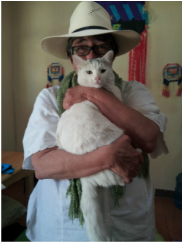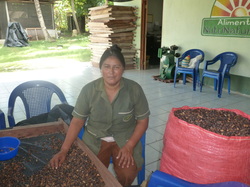
died. “So the people ate ramón,” he told me. "And because of the ramón, they did not die.”
A sign was attached to a gate and beneath it a phone number for information on buying ramón. The gate was open though so I went in, passing raised trays of the ramón seeds solar drying beneath shade cloth in open greenhouses. I came to a building where four women were sorting roasted seeds thecolor of coffee. They gave me one of the fresh seeds to look at. It was 3 times the size of the dried and toasted seed, with a shell that I couldn’t penetrate with my fingers. The seeds are dried for at least a week in the sun, as they are contain a lot of water and drying them thoroughly is essential for a useable product. After they are dried, the seeds are toasted in the wood fired stoves. By this point the outer shell is nothing more than a thin tissue which easily falls away when the seeds are tumbled and sorted.
Next I was shown a room full of packaged ramón, the toasted seeds having been ground into a flour which can be mixed with wheat flour for pancakes, cakes or cookies or used by itself as a gluten-free flour. It can also be added to milk for a refreshing cold or hot drink. I was shown a notebook discussing ramón’s nutritional content and when I asked to take notes from it, the women pulled up a chair for me at a table and poured me a cold glass of ramón, mixed with milk and cinnamon. They drink it everyday as they work. It was refreshing and pleasant to drink and it felt nutritious.
Mayans have used every part of the ramón tree, primarily for medicinal uses. Ramón is also eaten by many fruit eating birds and animals in the rainforest and so plays an important part in the ecology of the jungle..
Ramón has one other significant advantage over many other foods. It’s fruits are harvested by indigenous gatherers from the ramón tree between July and December. The tree needs no fertilizers or pesticides and lives to be 50 – 70 years old,
providing an abundance of seeds during it’s long life.
In fact, the women of ramón, and their ramón processing plant collective, NutriNaturales, were finalists in the 2007 Equator Initiative Prize, being selected as one of the 10 best new businesses in Guatemala. They also received a grant to distribute cookies made from ramón to Guatemala school children, many of whom suffer from malnutrition.
I bought several pounds of ramón for myself and to share with my friends in Antigua as well as two generous packages of ramón cookies. In cookies the taste resembled graham crackers, and the cookies were filling and seemed to give me a good energy boost. Despite the history of ramón, many people I spoke with, including some of the Mayans around Lake Petén-Itza, told me they had never heard of it. I ended up giving away half of my cookies to local people in order to promote this great nutritious product and the wonderful women in Ixlu who make it available today.
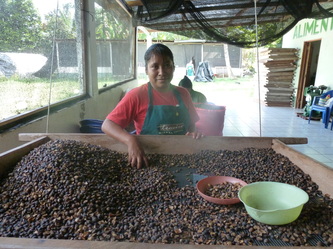
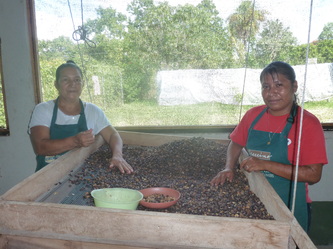
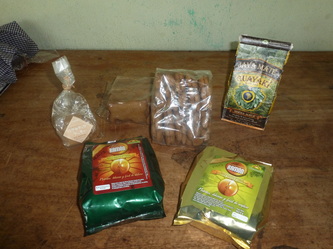

 RSS Feed
RSS Feed
